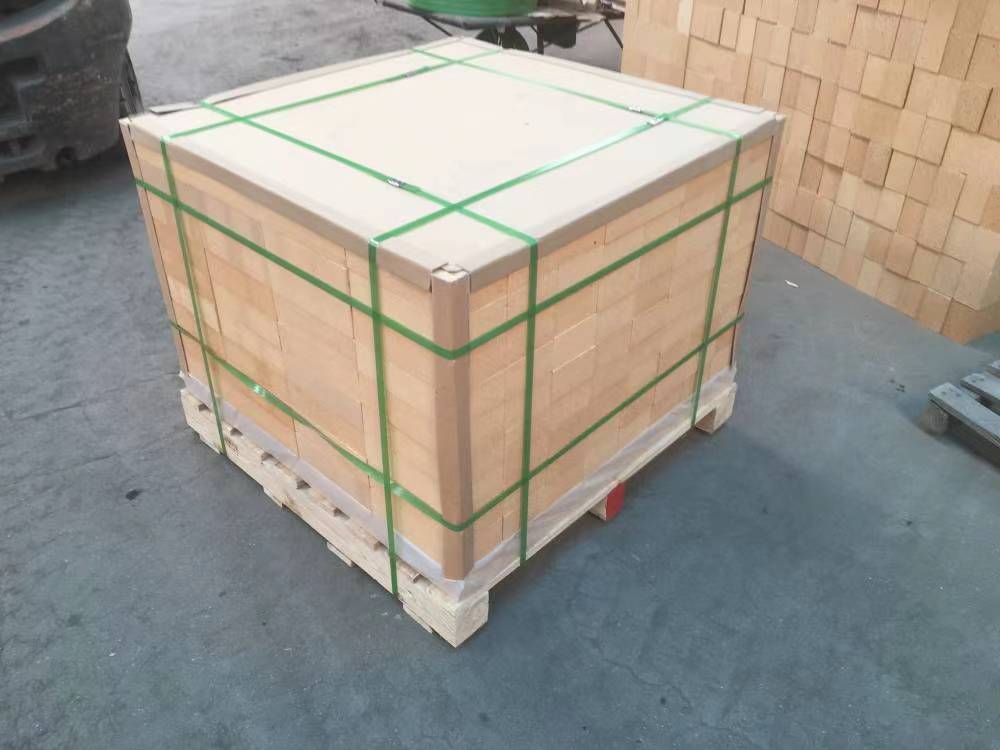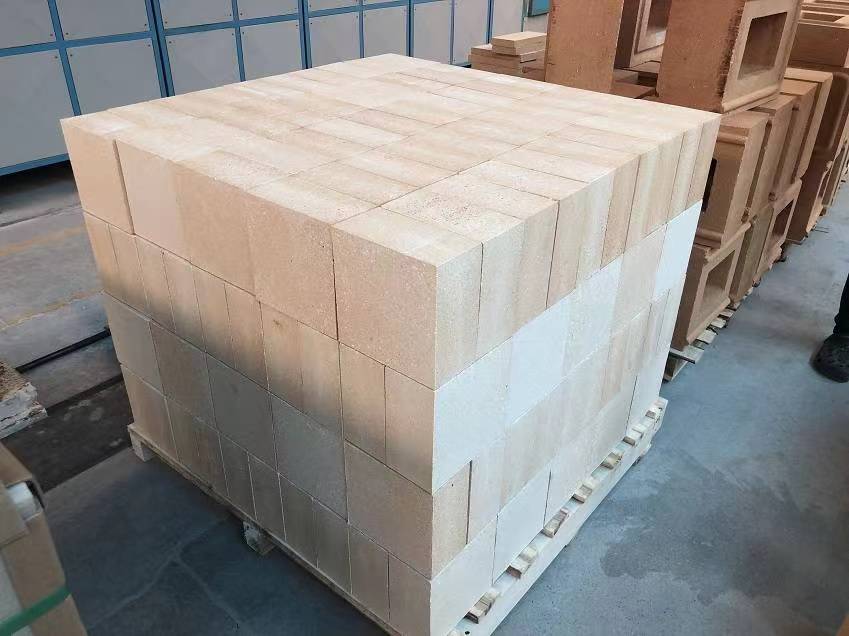What is the Role of Magnesia in Bricks?
Sep 02, 2024Magnesia bricks, also known as magnesite bricks, are a specialized type of refractory brick that plays a crucial role in various high-temperature industrial applications. These bricks are predominantly composed of magnesia (MgO), a material known for its exceptional resistance to heat, abrasion, and chemical attacks. But what exactly is the role of magnesia in bricks, and why is it such an important component? This article delves into the key attributes of magnesia, its role in refractory materials, and how it contributes to the overall performance of magnesia bricks.
Magnesia, or magnesium oxide (MgO), is derived from the mineral magnesite. It is an alkaline earth metal oxide with a high melting point, which makes it an ideal material for use in environments where extreme temperatures are the norm. The production process of magnesia involves the calcination of magnesite at temperatures ranging from 1,500°C to 2,000°C, resulting in a material with excellent thermal properties.
One of the primary reasons magnesia is used in refractory bricks is due to its high melting point. Magnesia has a melting point of approximately 2,800°C (5,072°F), which is significantly higher than many other materials. This property ensures that magnesia bricks can withstand the extreme temperatures found in industries such as steelmaking, cement production, and glass manufacturing.
Magnesia’s high thermal conductivity is another critical factor in its use in refractory bricks. This property allows magnesia bricks to efficiently transfer heat, minimizing thermal stress and prolonging the life of the brick. In high-temperature applications, where maintaining structural integrity is vital, magnesia bricks offer a reliable solution.
Magnesia is highly resistant to chemical reactions, especially in basic environments. This chemical stability makes magnesia bricks ideal for use in industries where the bricks are exposed to basic slags, which are common in steelmaking processes. The resistance to corrosion ensures that the bricks maintain their integrity over extended periods, reducing the need for frequent replacements and maintenance.

Now that we have an understanding of magnesia's properties, let’s explore its specific role in refractory bricks and why it is the preferred material in various industrial applications.
The most critical role of magnesia in refractory bricks is to enhance their refractoriness. Refractoriness refers to the ability of a material to withstand high temperatures without melting or breaking down. Magnesia’s high melting point ensures that bricks made from this material can endure the extreme conditions of industrial furnaces, kilns, and other high-temperature environments.
In industries such as steelmaking, where the temperature inside the furnaces can reach up to 1,700°C, the use of magnesia bricks is essential. These bricks form the lining of the furnace, protecting the structure from the intense heat and ensuring the efficiency of the steel production process.
In metallurgical processes, the interaction between the molten metal and the furnace lining is a critical factor. Slag, a byproduct of metal smelting, is often acidic or basic in nature. Magnesia bricks, due to their basic nature, are highly resistant to basic slags, making them an ideal choice for lining furnaces in steelmaking and other metallurgical industries.
The resistance to slag erosion not only prolongs the life of the bricks but also ensures the purity of the metal being produced. Contaminants from the furnace lining can negatively impact the quality of the metal, making magnesia bricks a crucial component in maintaining product quality.
Magnesia bricks are known for their structural strength, which is a direct result of the properties of magnesia. The high compressive strength of these bricks ensures that they can withstand the mechanical stresses encountered in high-temperature environments. This strength is particularly important in applications such as rotary kilns, where the bricks are subjected to constant movement and abrasion.
The durability and strength of magnesia bricks reduce the frequency of maintenance and replacement, leading to lower operational costs and increased efficiency in industrial processes.
Thermal shock resistance is the ability of a material to withstand rapid temperature changes without cracking or losing its structural integrity. Magnesia bricks exhibit excellent thermal shock resistance, making them suitable for applications where temperatures fluctuate frequently.
In glass manufacturing, for instance, the process involves rapid heating and cooling cycles. Magnesia bricks, with their superior thermal shock resistance, ensure that the furnace lining remains intact, preventing costly downtimes and maintaining production efficiency.

There are several types of magnesia bricks, each designed to meet specific industrial requirements. Below are some common types and their applications:
Magnesia chrome bricks are a combination of magnesia and chromite. These bricks are highly resistant to acidic slags and are commonly used in the linings of cement rotary kilns, non-ferrous furnaces, and glass tank regenerators. The addition of chromite enhances the brick's resistance to chemical corrosion, making it suitable for harsh environments.
Magnesia carbon bricks are made by adding carbon to magnesia. These bricks are primarily used in steelmaking applications, particularly in electric arc furnaces and converters. The presence of carbon enhances the brick's resistance to thermal shock and slag penetration, making it ideal for high-temperature metallurgical processes.
Magnesia alumina bricks are a blend of magnesia and alumina. These bricks are known for their excellent thermal stability and resistance to chemical attacks. They are commonly used in cement rotary kilns, lime kilns, and other high-temperature environments where durability and resistance to corrosion are essential.
The performance of magnesia bricks in industrial applications is directly linked to the quality of the raw materials and the manufacturing process. Ensuring that the magnesia used in brick production is of the highest purity is crucial for achieving optimal results.
Raw Material Selection: The selection of high-quality magnesite is the first step in producing superior magnesia bricks. The purity of the magnesite directly affects the refractory properties of the brick. Impurities can lower the melting point and reduce the brick's resistance to chemical attacks.
Manufacturing Process: The calcination process, where magnesite is heated to produce magnesia, must be carefully controlled to ensure that the desired properties are achieved. Any deviation in temperature or duration can impact the final product's quality.
Quality Testing: Rigorous testing of the finished magnesia bricks is essential to ensure that they meet industry standards. Tests for compressive strength, thermal shock resistance, and chemical stability help identify any defects in the bricks before they are used in critical applications.
The production of magnesia bricks, like many industrial processes, has an environmental impact. However, advancements in technology and manufacturing practices have made it possible to produce high-quality magnesia bricks while minimizing environmental harm.
Sustainable Sourcing: Responsible sourcing of magnesite, the raw material for magnesia bricks, is essential for reducing the environmental footprint of production. This includes selecting mines that adhere to sustainable mining practices and ensuring that the extraction process does not harm the surrounding ecosystem.
Energy Efficiency: The calcination process, which requires high temperatures, is energy-intensive. Implementing energy-efficient technologies in kilns and furnaces can significantly reduce the carbon footprint of magnesia brick production.
Waste Management: The production of magnesia bricks generates waste materials, including dust and off-specification bricks. Recycling these materials and reintroducing them into the production process can help reduce waste and conserve natural resources.
Magnesia bricks are indispensable in industries that operate at high temperatures, such as steelmaking, cement production, and glass manufacturing. The unique properties of magnesia—its high melting point, thermal conductivity, chemical stability, and resistance to slag—make it the material of choice for refractory bricks in these demanding environments.
As an experienced manufacturer and exporter of magnesia bricks, understanding the role of magnesia in your products is crucial for ensuring their quality and performance in industrial applications. By focusing on quality control, sustainable production practices, and staying informed about advancements in refractory technology, you can continue to meet the needs of your clients and maintain a competitive edge in the market.
For more information on our magnesia bricks, including detailed specifications and pricing, please visit our product page.
